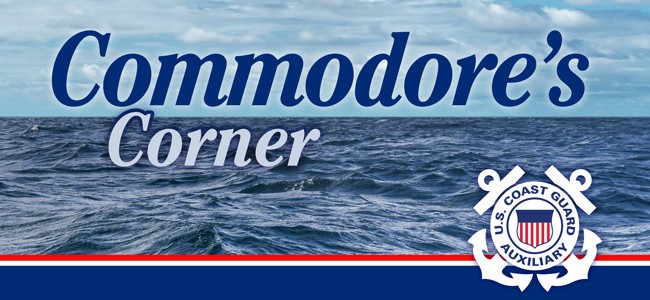
As the temperatures continue to drop, we need to focus now on skippering in heavy weather – because it is coming. This column is about that.
Heavy Water
Why is heavy weather more dangerous as we move into the Fall? Well, putting hurricanes aside which are in their own class, heavy weather in the colder months has its own set of challenges. First, hypothermia is but a small slip away. Second, as the water chills, it gets denser per cubic foot. Denser means more "oomph" behind those chops. Third, it gets darker sooner. What used to be an all-daylight trip out to a favorite fishing spot is now a return under the cover of night.
Believe me, once one thing goes wrong, the chances of something else going wrong before you can focus on and fix the first problem just went up. Now you have a spiraling and accelerating danger curve on your hands. So, what to do if caught in heavy weather?
- Put Your Life Jackets On – Right away, the skipper has to direct everyone to don their life jackets. On my vessel, I have a heavy weather/type-1 life jacket on the back of my helm seat. Across the back, where the crew can read it, it says, "If you see the captain put this on, try to find one for yourself."
- Take Waves at an angle – Those waves that you are trying to muscle through pack tremendous power within them. Did you know that 1 out of every 20 boats that sink at sea does so when the hull comes apart under the force of pounding seas? If that statistic was adjusted for heavy weather sinkings, it would go up dramatically, I'm sure. Cross the waves at a 45-degree angle and "tack" across the storm like a sail boat moving to windward. And slow down! Your 20 knots and 5 knots of wave speed multiply the force of the pounding. Slow down and cut the forces.
- Don't Be Bashful – If things start to get dicey, get on the radio and call the USCG. Tell them where you are, where you are heading and why you are concerned about the situation. Most likely, the watch stander will take that information and ask you to check in with him or her every 15 minutes. Don't be late in checking in or you may find a red-and-white helicopter hovering over you. But if you are in trouble, the USCG will know where you were just 15 minutes prior. You started the "rescue starts now" clock the last time you communicated your position.
- Any Port in a Storm – OK, you told your spouse you'd be back by 4pm and it is now 6pm and you are struggling against the nor'easter that is keeping you from operating at speed to get in. Don't bet your life on a perceived deadline. Your spouse would rather you survive. Head to the nearest harbor you can safely make, even if that means turning and putting the storm on your stern. Arriving safely in New Jersey is better than not arriving at all.
- Surf – If you find the sea is going where you are, consider getting on the back of one of those growlers and staying there, all the way home. It takes considerable seamanship and helmsmanship to ride the back of a wave but consider this. If you have an outboard engine with a transom cut-out, your "free board" is only that little distance between the water line and the lowest part of that cut-out. Probably 6"-10". If you have a following sea and one of those growlers catches up with you, he will swamp you from astern. Stay ahead and he can't.
- Create a Ditch Bag – If things really get dicey, don't leave the boat until it sinks out from under you. But have a "ditch bag" ready – cell phone, handheld radio, fresh water, dry clothes, medical kit, flashlight, flares, etc come immediately to mind.
I spent 5 days at sea in Hurricane Alberta over 40 years ago. I have a healthy respect for the sea and how fast things can go from bad to absolutely awful. Don't be a statistic. Be the skipper who can say, "I always bring my crew back."
BTW, if you have any questions about this post or are interested in being part of USCG Forces, email me at JoinUSCGAux@aol.com or go directly to the US Coast Guard Auxiliary "Flotilla Finder" at http://www.cgaux.org/units.php and we will help you "get in this thing."












